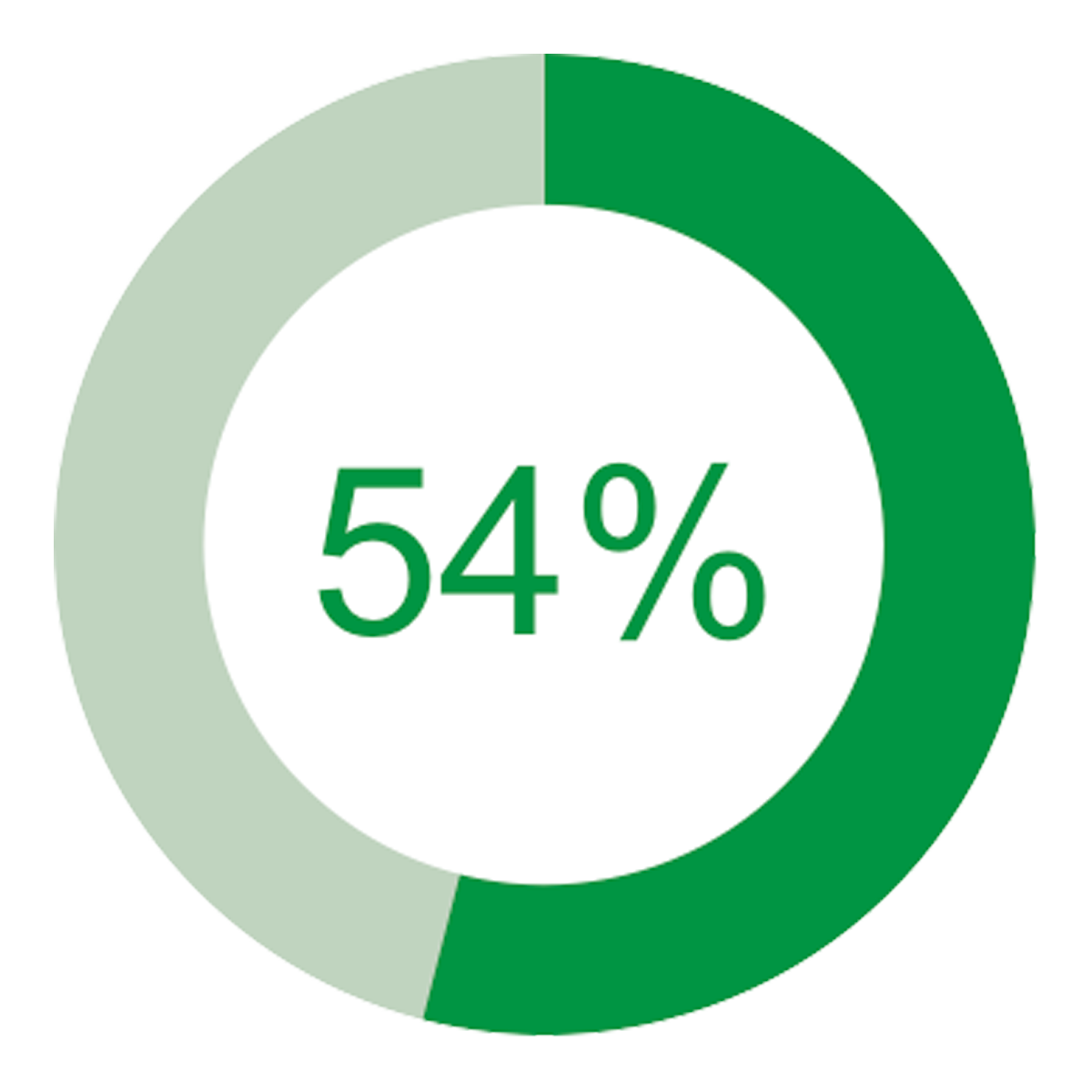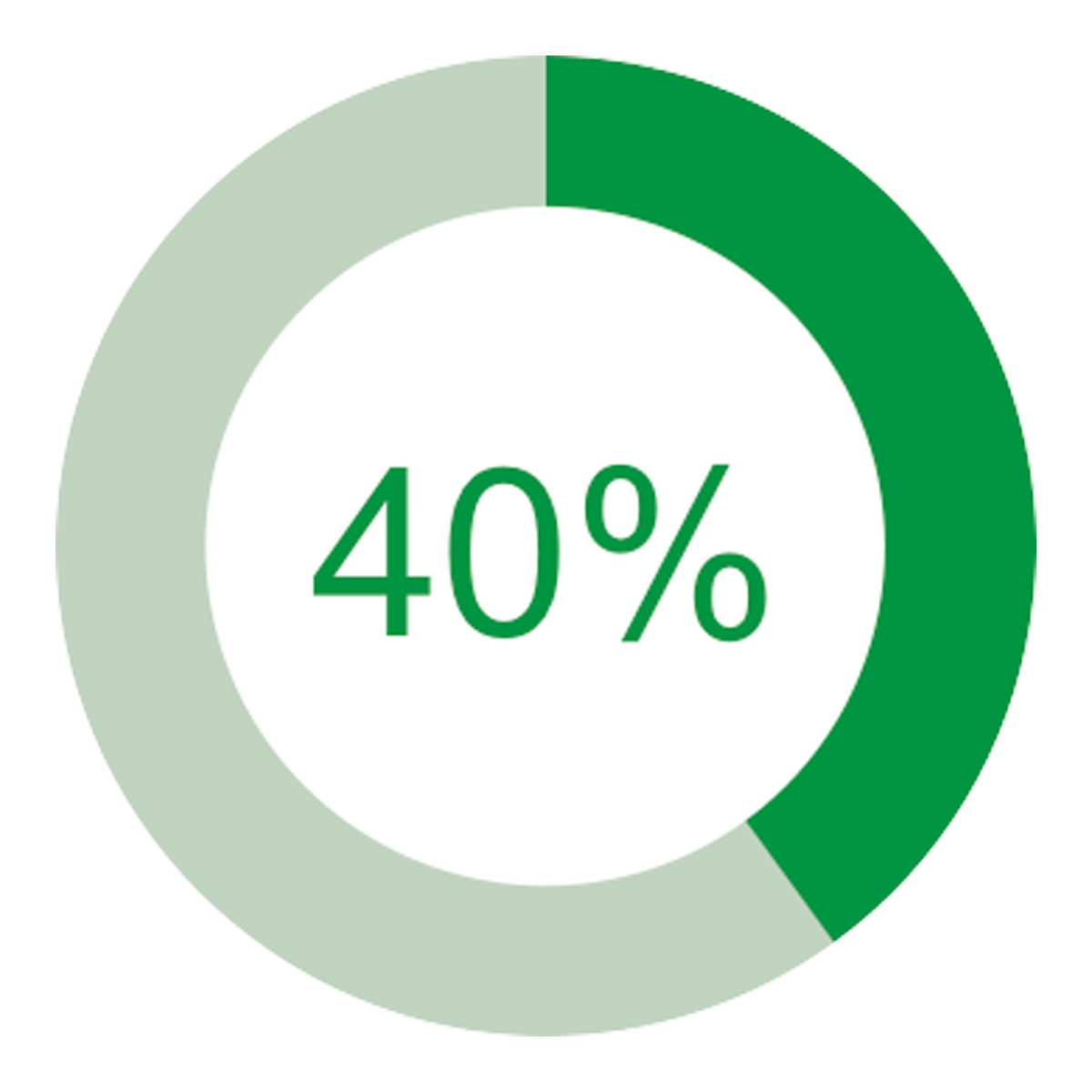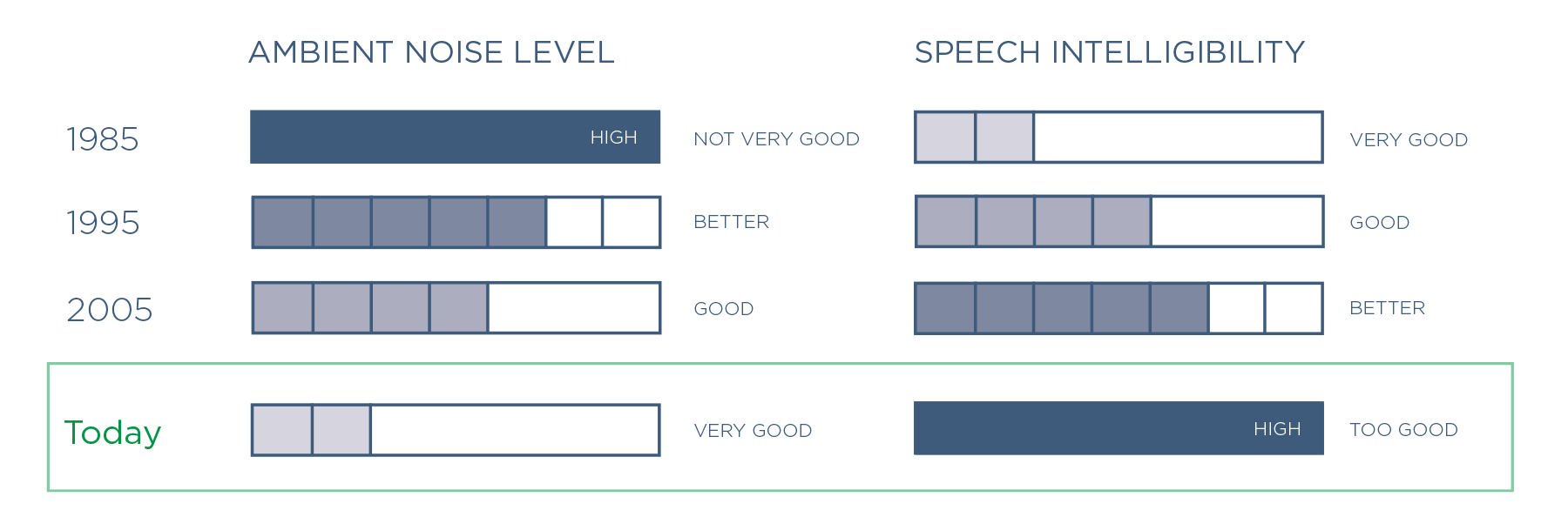
Open-plan offices are
the new normal!
Over 70% of offices are now open office environments and this trend is set to continue.
(International Facility Management Association, „Space and Project Management Benchmarks, Research Report #34”)
In tandem with technological development, office landscapes have changed dramatically over recent years. Incidental noise, such as that from loud keyboards and fans inside computers, has practically vanished, while printers have been banished to side rooms. The old whirr of background noise is gone, and speech can be clearly understood.
THE QUIETNESS HAS BECOME A PROBLEM!
WHY IS QUIETNESS IN THE WORKPLACE A PROBLEM?
When other people’s conversations are easily overheard, this becomes very distracting.
Unwanted eavesdropping disrupts our internal monologue and makes it very hard to concentrate.
21.5 minutes
are lost every day due to unwanted acoustic distraction.
(Haapakangas, Helenius, Keskinen, Hongisto, 9th International Congress of Noise as a Public Health Problem 2017)
Here’s an example:

This drop in productivity leads to considerable financial losses for businesses. 21.5 minutes a day correspond to approximately 4.5% of the average working day per employee (based on an eight-hour day). This means that a company with 40 employees and average salary costs of 50,000 euros per person loses up to 90,000 euros each year.
Studies show that employees get interrupted every 11 minutes and that it takes up:
23 minutes,
before they are able to return to their work.
(Gloria Mark „The Cost of Interrupted Work: More Speed and Stress“ University of California 2005)
Lack of acoustic privacy has a negative impact on productivity!
A study into this issue was conducted in 21 open-plan offices (875 people).
82% of respondents rated intelligible speech from co-workers as the biggest disruptive factor.
The study corroborated the use of masking for establishing good working conditions in open-plan offices.

(Study by the Finnish Institute of Occupational Health and the University of Turku Finland on behalf of the Acoustical Society of America 2017)
Over half of employees working in cubicle-based and open-plan offices are dissatisfied with the level of acoustic privacy in their workplace.
Unintentional eavesdropping on other people’s conversations reduces the ability of employees to concentrate in the office.
Neglecting the quality of well-being and job satisfaction leads to productivity losses up to

(Workspace satisfaction: The privacy-communication trade-off in open-plan offices – Jungsoo Kim, Richard de Dear – Journal of Environmental Psychology 36 (2013) 18-26)
Obstacles to good communication create a productivity loss of up to

(Fraunhofer Institute for Industrial Engineering (IAO) 2005)
The central acoustic task of office planning is to minimise the disturbing speech sound of employees… by providing sufficient damping, absorption, shielding and masking.
(VDI 2569 Oktober 2019: Schallschutz und akustische Gestaltung im Büro, Verein Deutscher Ingenieure e.V. Düsseldorf)

